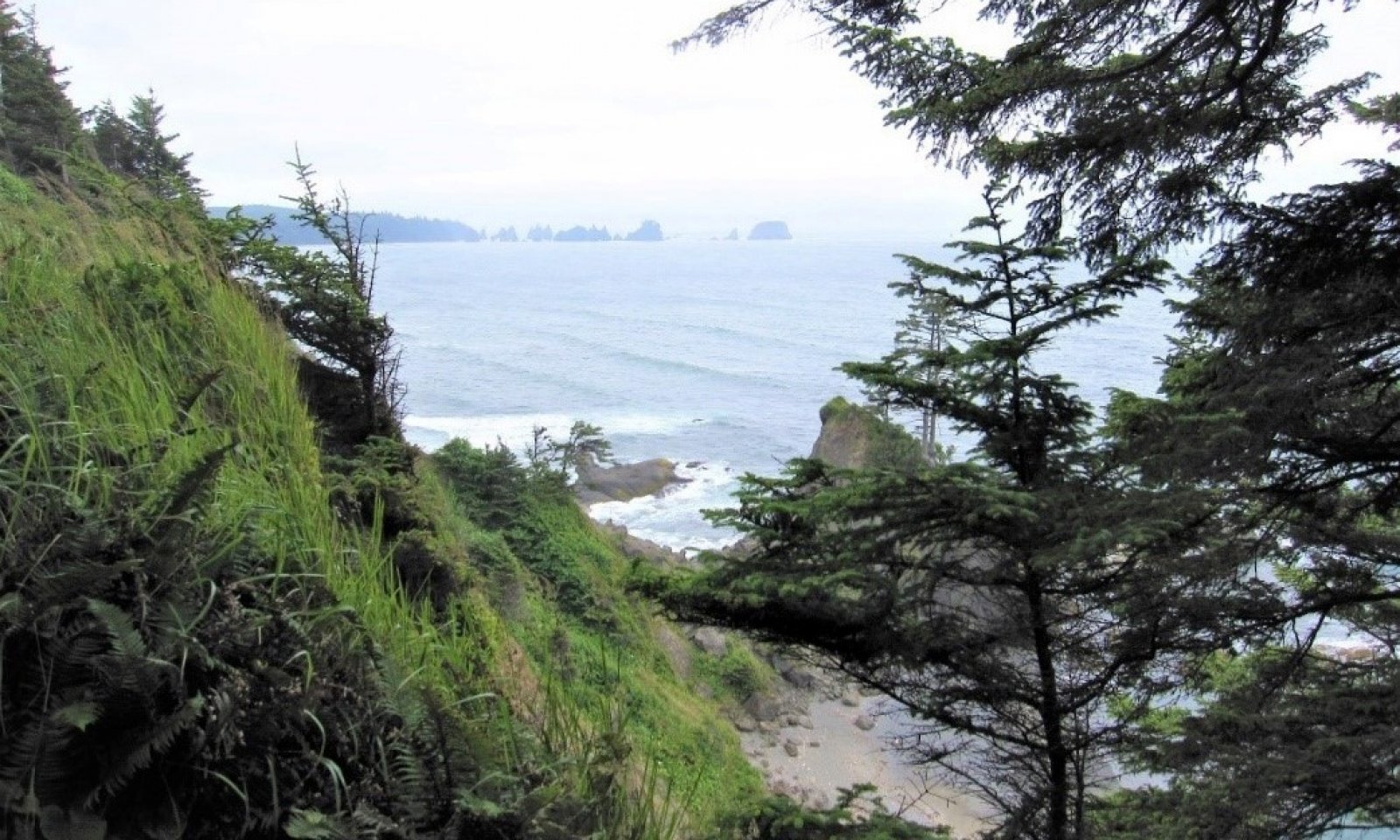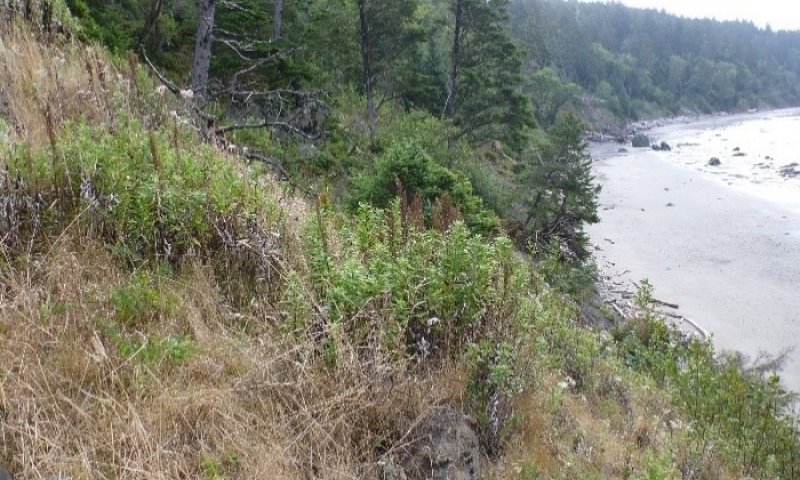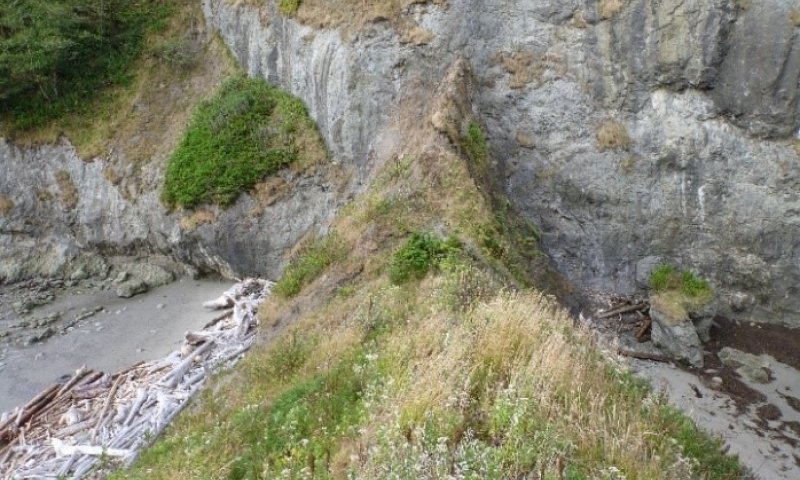

Natural Resources
Conservation Service
Ecological site F004AA402WA
Coastal Headland
Last updated: 1/23/2025
Accessed: 12/20/2025
General information
Provisional. A provisional ecological site description has undergone quality control and quality assurance review. It contains a working state and transition model and enough information to identify the ecological site.
MLRA notes
Major Land Resource Area (MLRA): 004A–Sitka Spruce Belt
This resource area is along the coast of the Pacific Ocean. It is characterized by a marine climate and coastal fog belt. The parent material is primarily glacial, marine, or alluvial sediment and some scattered areas of Tertiary sedimentary rock and organic deposits. Glacial deposits are dominant in the northern part of the MLRA in Washington; marine and alluvial deposits and eolian sand are dominant along the southern part of the Washington coast and extending into Oregon. The mean annual precipitation ranges from 52 to 60 inches near the beaches to more than 190 inches in the inland areas of the MLRA.
Andisols and Inceptisols are the dominant soil orders in the MLRA, but Spodosols, Entisols, and Histosols are also present. The soils are shallow to very deep and very poorly drained to somewhat excessively drained. They are on hilly marine terraces and drift plains; coastal uplands, hills, and foothills; flood plains; and coastal dunes, marshes, and estuaries.
The soil temperature regimes of MLRA 4A are moderated by the proximity to the Pacific Ocean, which eases the differences between the mean summer and winter temperatures. The seasonal differences in temperature are more pronounced in adjacent MLRAs further inland. Included in MLRA 4A are soils in cooler areas at higher elevations or on northerly aspects that have an isofrigid temperature regime.
The soil moisture regimes of MLRA 4A are typified by soils that do not have an extended dry period during normal years. Many of the soils further inland in MLRA 2 have a dry period in summer. Soils in low-lying areas and depressions of MLRA 4A are saturated in the rooting zone for extended periods due to a high water table or long or very long periods of flooding or ponding.
LRU notes
The Northern Sitka Spruce Belt land resource unit (LRU A) of MLRA 4A is along the northwest coast of the Olympic Peninsula to the Chehalis River in Washington State. The parent material is dominantly glacial deposits derived from continental or alpine sources. This LRU extends from the northwesternmost corner of the Olympic Peninsula south to the northern edge of Grays Harbor. It is bounded on the west by the Pacific Ocean and on the east by the Olympic Mountains. Several major rivers carved valleys through the glacially derived landscape and deposited more recent alluvium. These include the Sol Duc, Bogachiel, Hoh, Queets, Quinault, and Humptulips Rivers.
Ecological site concept
This ecological site is on the western coastline of Washington in the Pacific Northwest. This site includes coastal headlands that are on plains, hills, and terraces along the coast of the Pacific Ocean. The site is exposed to extremely high winds and salt spray. It commonly is on very steep slopes that have south or southwesterly aspects.
The vegetation is dominantly trees, shrubs, and forbs that are well adapted to wind pruning, salt spray, low nutrient availability, and wind desiccation. The most common tree species are stunted and dwarfed krummholz Sitka spruce (Picea sitchensis) and shore pine (Pinus contorta var. contorta). The dominant shrubs are salal (Gaultheria shallon), evergreen huckleberry (Vaccinium ovatum), and salmonberry (Rubus spectabilis). Forbs and grasses are less prevalent in mature stands, but they may include false lily of the valley (Maianthemum dilatatum), western brackenfern (Pteridium aquilinum), western swordfern (Polystichum munitum), and Pacific reedgrass (Calamagrostis nutkaensis). Lichen and moss commonly are abundant and diverse.
The most common disturbance on this site is windthrow following large coastal storms, which creates pockets of forest openings. Landslides may occur along the steep coastal hillslopes. Although wildfire is uncommon in this ecological site, it will limit the establishment and encroachment of conifer trees and maintain a coastal prairie community. Unnatural disturbances include grazing, urban sprawl, and establishment of non-native species.
Table 1. Dominant plant species
| Tree |
(1) Picea sitchensis |
|---|---|
| Shrub |
(1) Gaultheria shallon |
| Herbaceous |
(1) Maianthemum dilatatum |
Click on box and path labels to scroll to the respective text.



